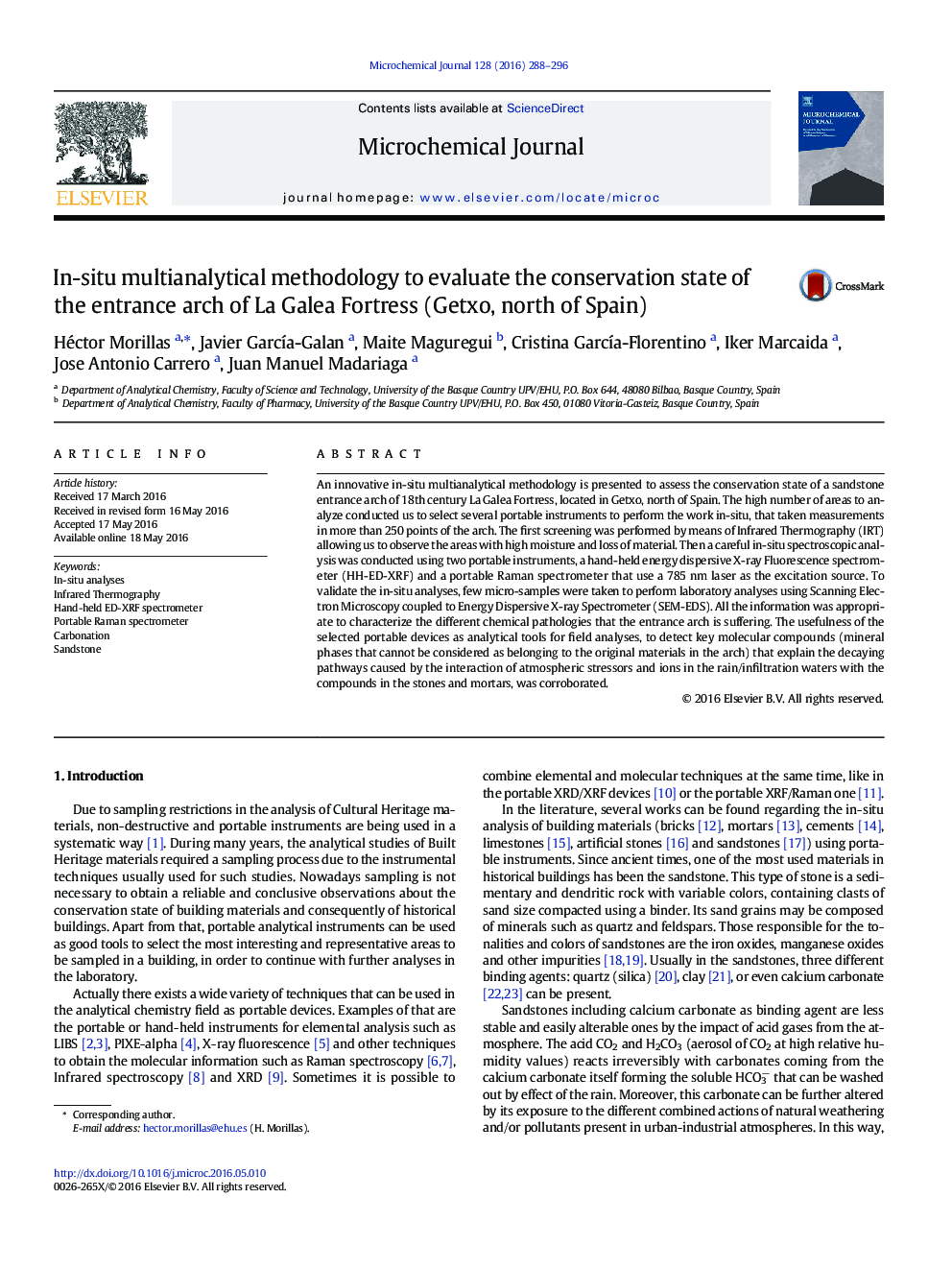| Article ID | Journal | Published Year | Pages | File Type |
|---|---|---|---|---|
| 1227569 | Microchemical Journal | 2016 | 9 Pages |
•In-situ methodology was applied to assess the conservation state of a sandstone arch.•A preliminary screening using IRT was carried out.•A combination of handheld ED-XRF and portable Raman spectroscopy was applied.•The in-situ results were complemented with ICP-MS and SEM-EDS analyses.
An innovative in-situ multianalytical methodology is presented to assess the conservation state of a sandstone entrance arch of 18th century La Galea Fortress, located in Getxo, north of Spain. The high number of areas to analyze conducted us to select several portable instruments to perform the work in-situ, that taken measurements in more than 250 points of the arch. The first screening was performed by means of Infrared Thermography (IRT) allowing us to observe the areas with high moisture and loss of material. Then a careful in-situ spectroscopic analysis was conducted using two portable instruments, a hand-held energy dispersive X-ray Fluorescence spectrometer (HH-ED-XRF) and a portable Raman spectrometer that use a 785 nm laser as the excitation source. To validate the in-situ analyses, few micro-samples were taken to perform laboratory analyses using Scanning Electron Microscopy coupled to Energy Dispersive X-ray Spectrometer (SEM-EDS). All the information was appropriate to characterize the different chemical pathologies that the entrance arch is suffering. The usefulness of the selected portable devices as analytical tools for field analyses, to detect key molecular compounds (mineral phases that cannot be considered as belonging to the original materials in the arch) that explain the decaying pathways caused by the interaction of atmospheric stressors and ions in the rain/infiltration waters with the compounds in the stones and mortars, was corroborated.
